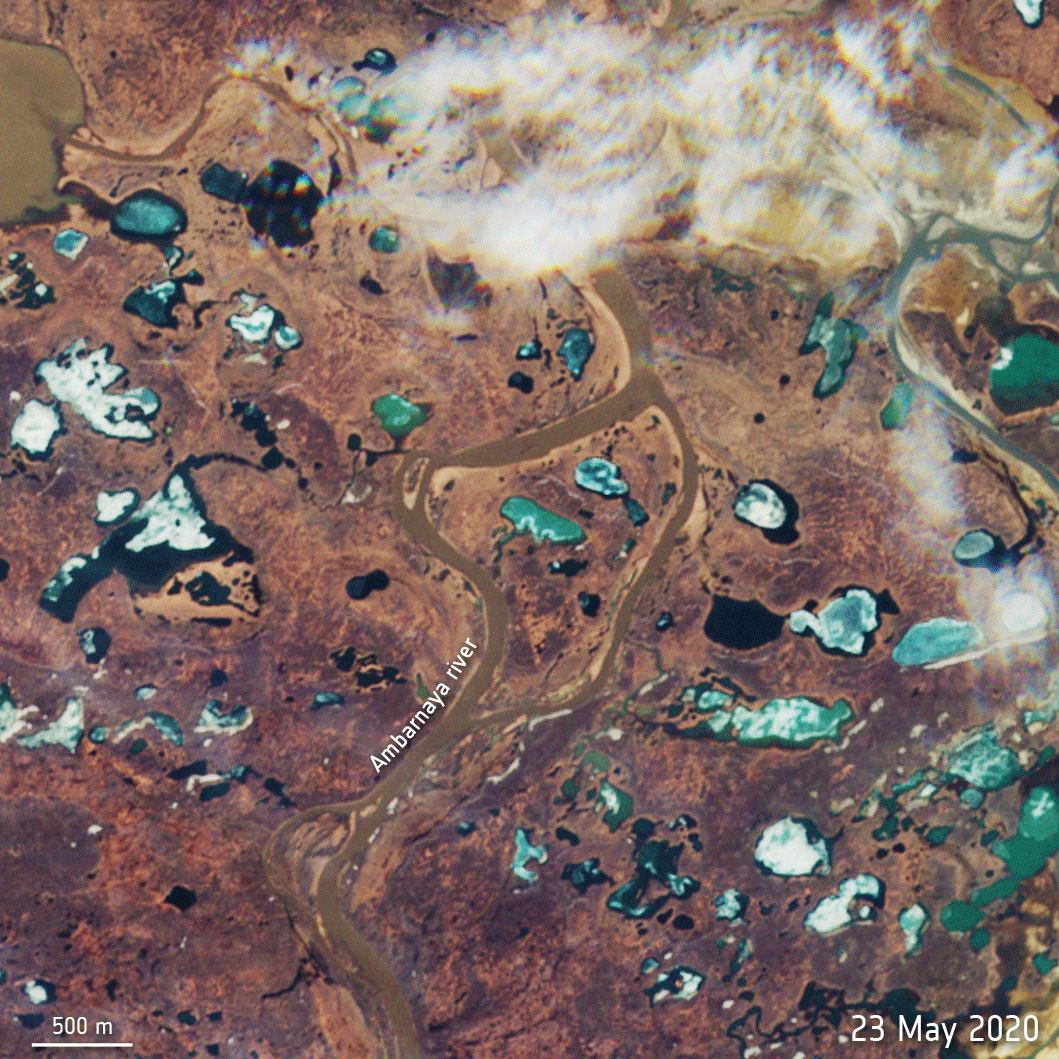Satellites spot major oil spill in the Arctic Circle (photos)
20,000 tons of fuel oil leaked into a river.
Two European satellites have spotted a catastrophic oil spill in the Arctic Circle.
About 20,000 tons of diesel oil has leaked into a river in the Arctic Circle after a fuel tank at a power plant near the Siberian city of Norilsk collapsed last Friday (May 29). The Russian Investigative Committee has launched an investigation into the incident, as the plant reportedly waited for two days before informing Moscow authorities about the spill, according to the BBC.
As you can see in the animation above, the oil (depicted in red) traveled down the Ambarnaya River on May 31 and June 1. The river flows into Lake Pyasino, which feeds into the Pysaina River. Watching from space, the European Space Agency's Copernicus Sentinel-2 mission has observed the spill, for which Russia has declared a state of emergency.
Related: Oil spill hinders space shuttle fuel tank delivery
The spill has contaminated a swath of land that covers roughly 135 square miles (350 square kilometers), according to the BBC. It is believed that ground subsidence, or the sinking or settling of the ground, beneath storage tanks holding fuel at the plant is behind this spill. This incident comes during a time when unusually high temperatures are causing the Arctic permafrost to melt.
Copernicus Sentinel-2 is an ESA mission made up of two satellites circling Earth in a sun-synchronous orbit. The satellites monitor and take high-resolution images of Earth's surface. They contribute important data to the European Union's Copernicus program, which focuses on issues including climate change, land monitoring and emergency management.
- SpaceX's Starlink constellation could swell by 30,000 more satellites
- SpaceX's Starlink broadband service will begin in 2020: report
- 'Whoa, it worked': Elon Musk tweets via SpaceX's Starlink satellites
Email Chelsea Gohd at cgohd@space.com or follow her on Twitter @chelsea_gohd. Follow us on Twitter @Spacedotcom and on Facebook.
OFFER: Save 45% on 'All About Space' 'How it Works' and 'All About History'!
For a limited time, you can take out a digital subscription to any of our best-selling science magazines for just $2.38 per month, or 45% off the standard price for the first three months.
Breaking space news, the latest updates on rocket launches, skywatching events and more!

Chelsea “Foxanne” Gohd joined Space.com in 2018 and is now a Senior Writer, writing about everything from climate change to planetary science and human spaceflight in both articles and on-camera in videos. With a degree in Public Health and biological sciences, Chelsea has written and worked for institutions including the American Museum of Natural History, Scientific American, Discover Magazine Blog, Astronomy Magazine and Live Science. When not writing, editing or filming something space-y, Chelsea "Foxanne" Gohd is writing music and performing as Foxanne, even launching a song to space in 2021 with Inspiration4. You can follow her on Twitter @chelsea_gohd and @foxannemusic.


